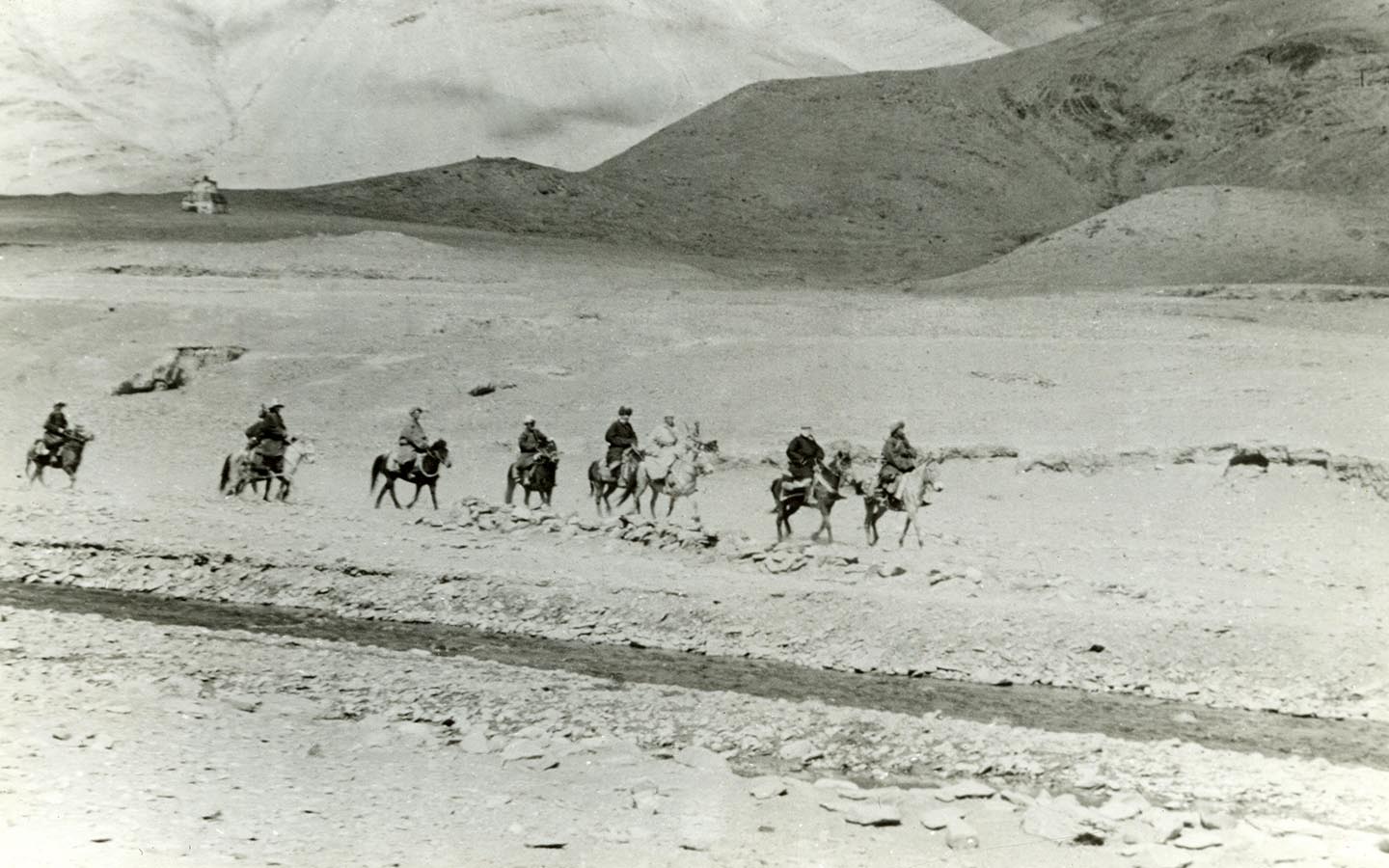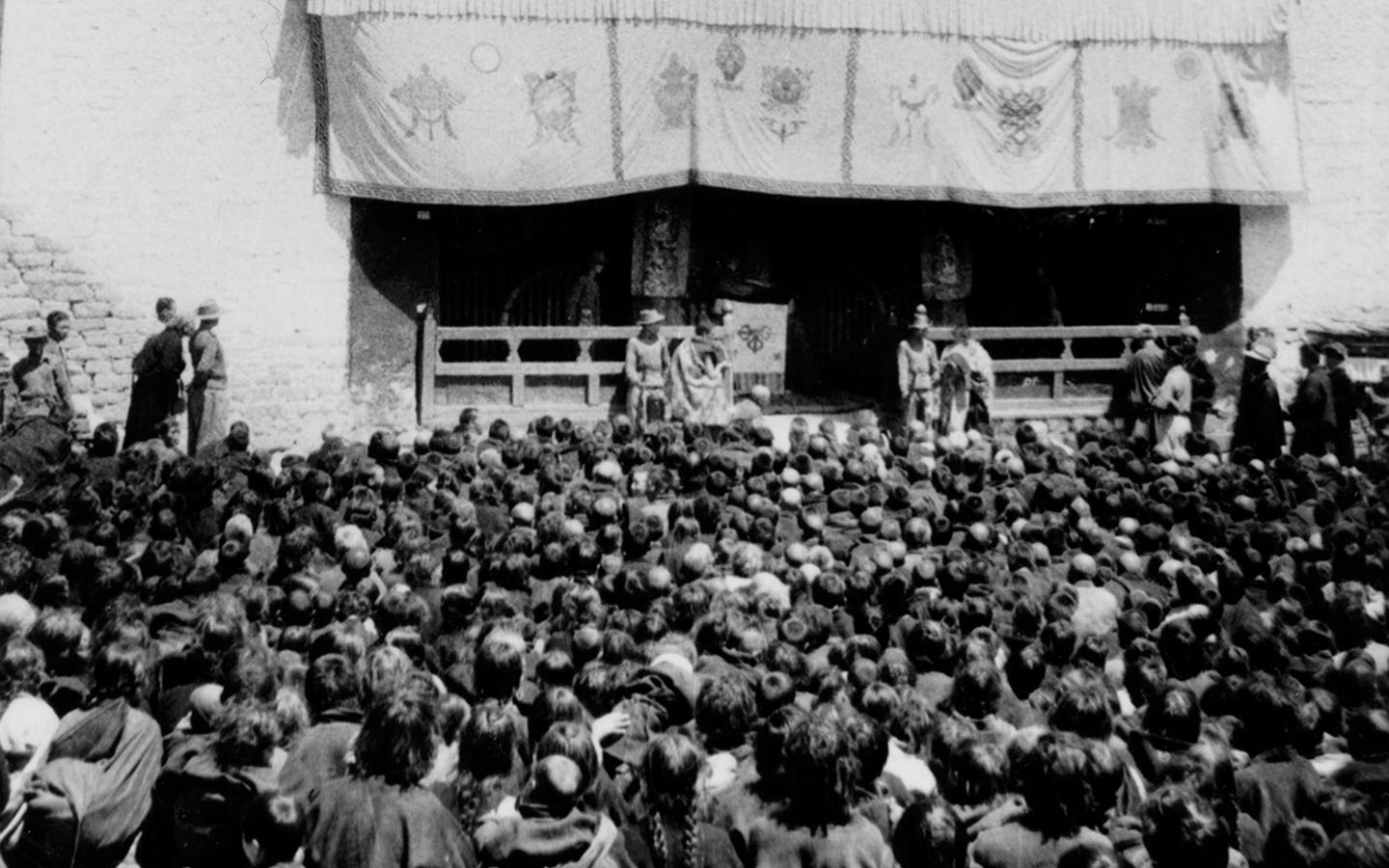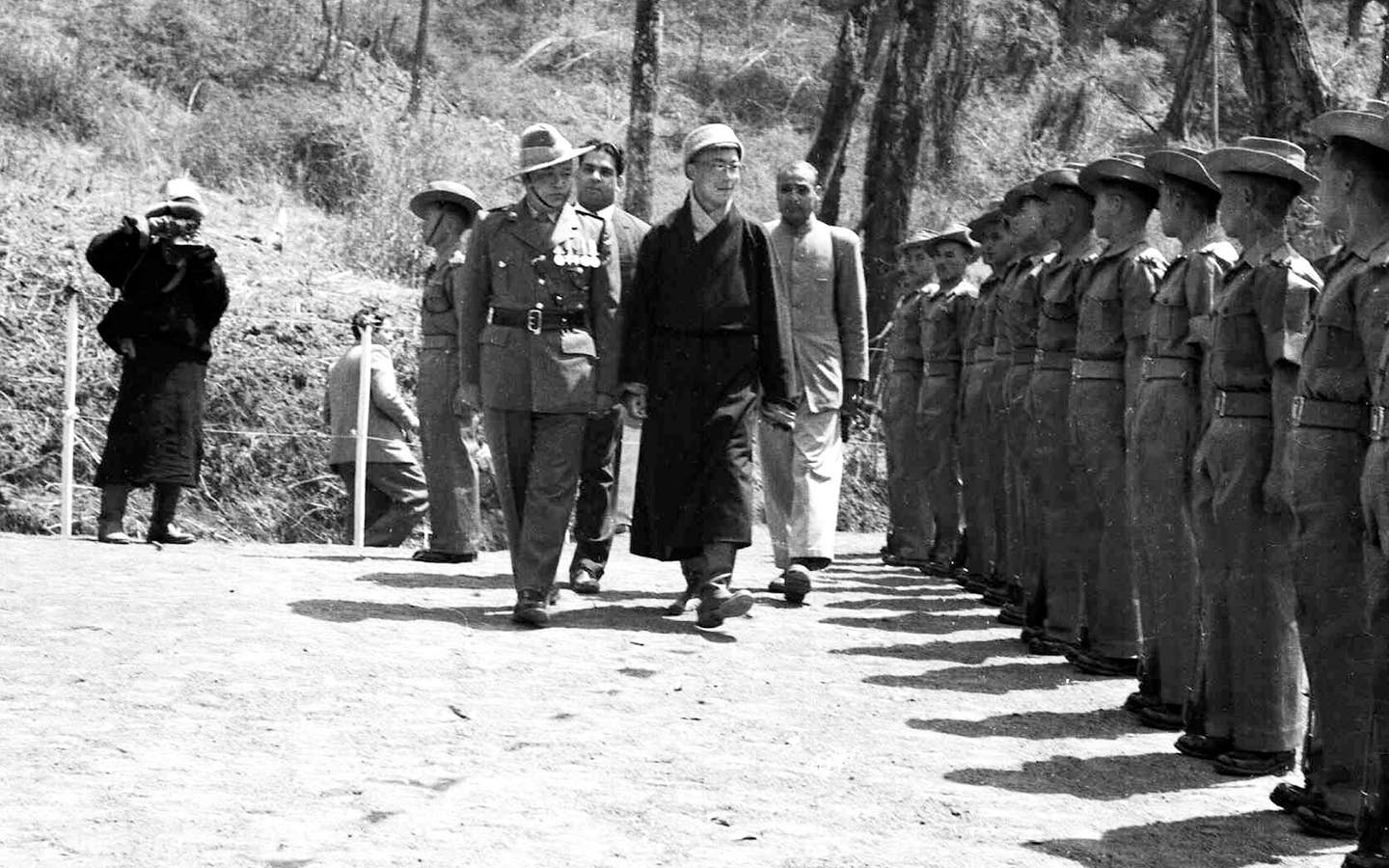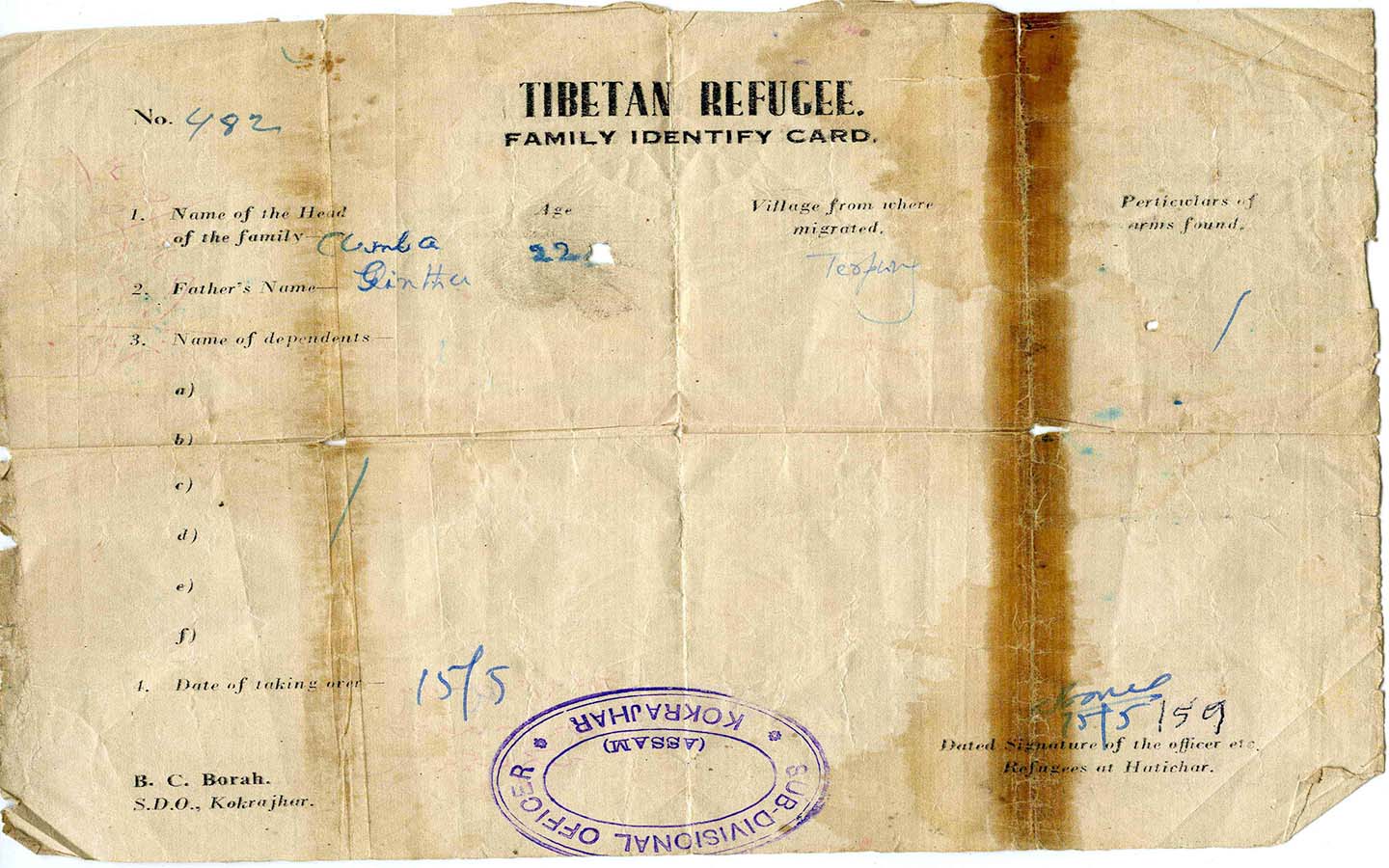Arrival - Forced into Exile
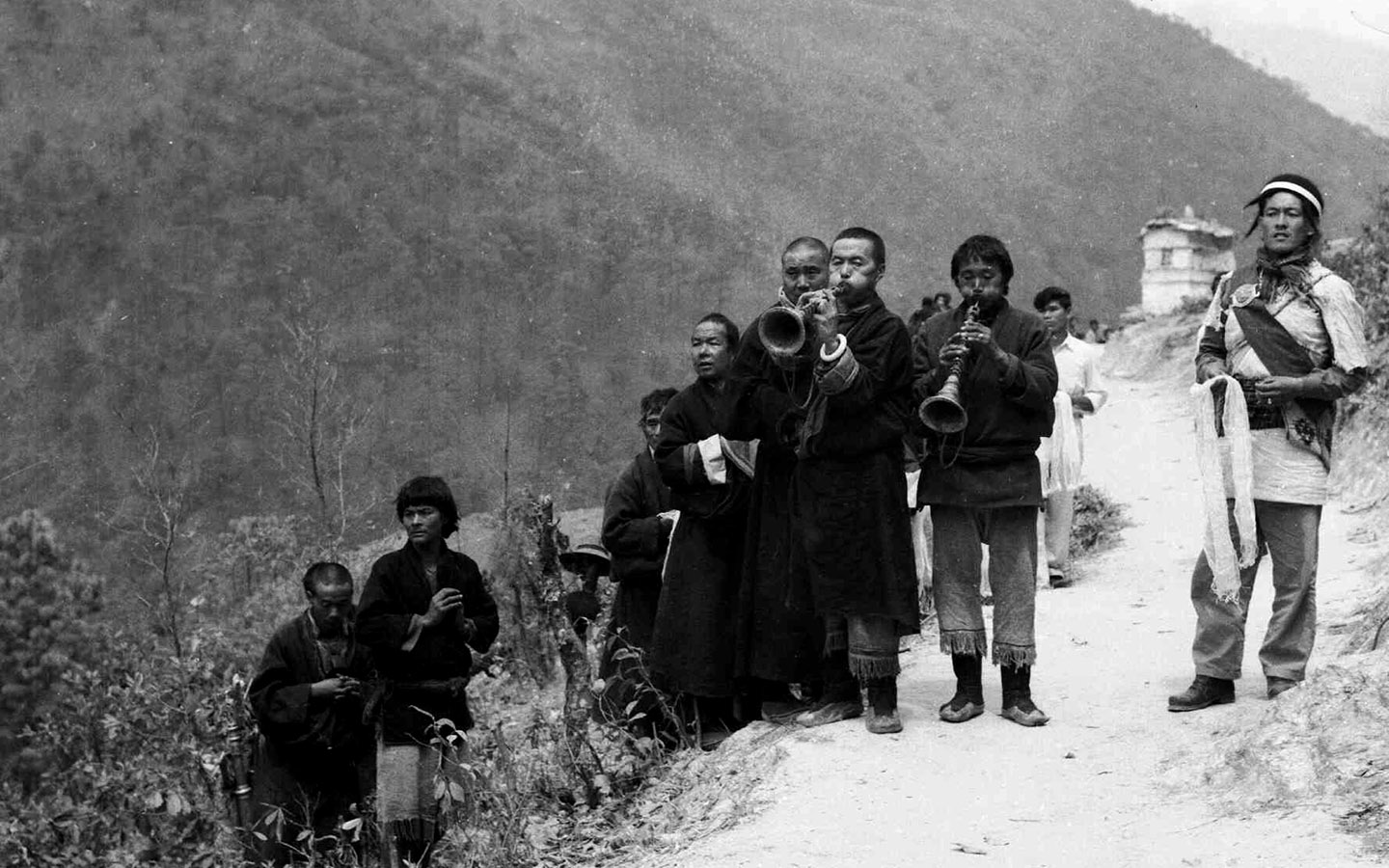 April, 1959
April, 1959Monpas waiting to receive His Holiness on the journey from Lumla to Tawang.
On the 31st of March, 1959 at 2pm, His Holiness and his entourage were received at Chuthangmo, the Indo-Tibet border, by T. S. Murthy, who was the Assistant Political Officer in Tawang. On 3rd April, His Holiness was met at Lumla by Har Mander Singh, the Political Officer of Kameng Frontier Division (Part of the North East Frontier Agency (NEFA), present day Arunachal Pradesh), who then proceeded to accompany His Holiness from Lumla to Tawang, finally reaching Bomdila on 12th April, escorted by the Assam Rifles.
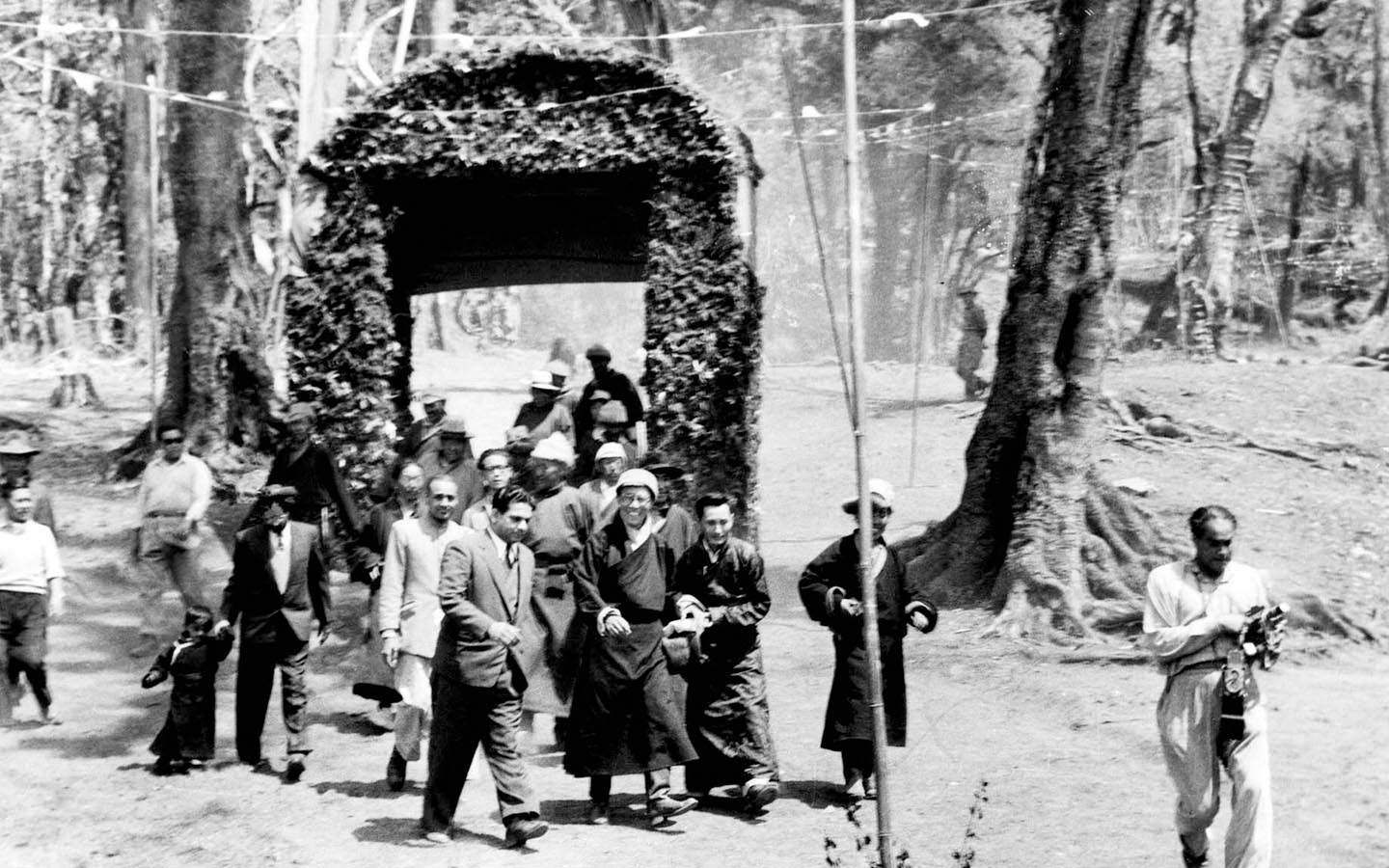 12 April, 1959
12 April, 1959His Holiness at Bomdila official reception met by P.N. Menon (former Consul- General of India in Lhasa from 1954 - 1956) and Sonam Topgay Kazi (who served as the Interpreter for the Indian Mission in Tibet from 1949 to 1955), sent by the government of India, seen on either side of His Holiness. Har Mander Singh can be seen behind P.N Menon
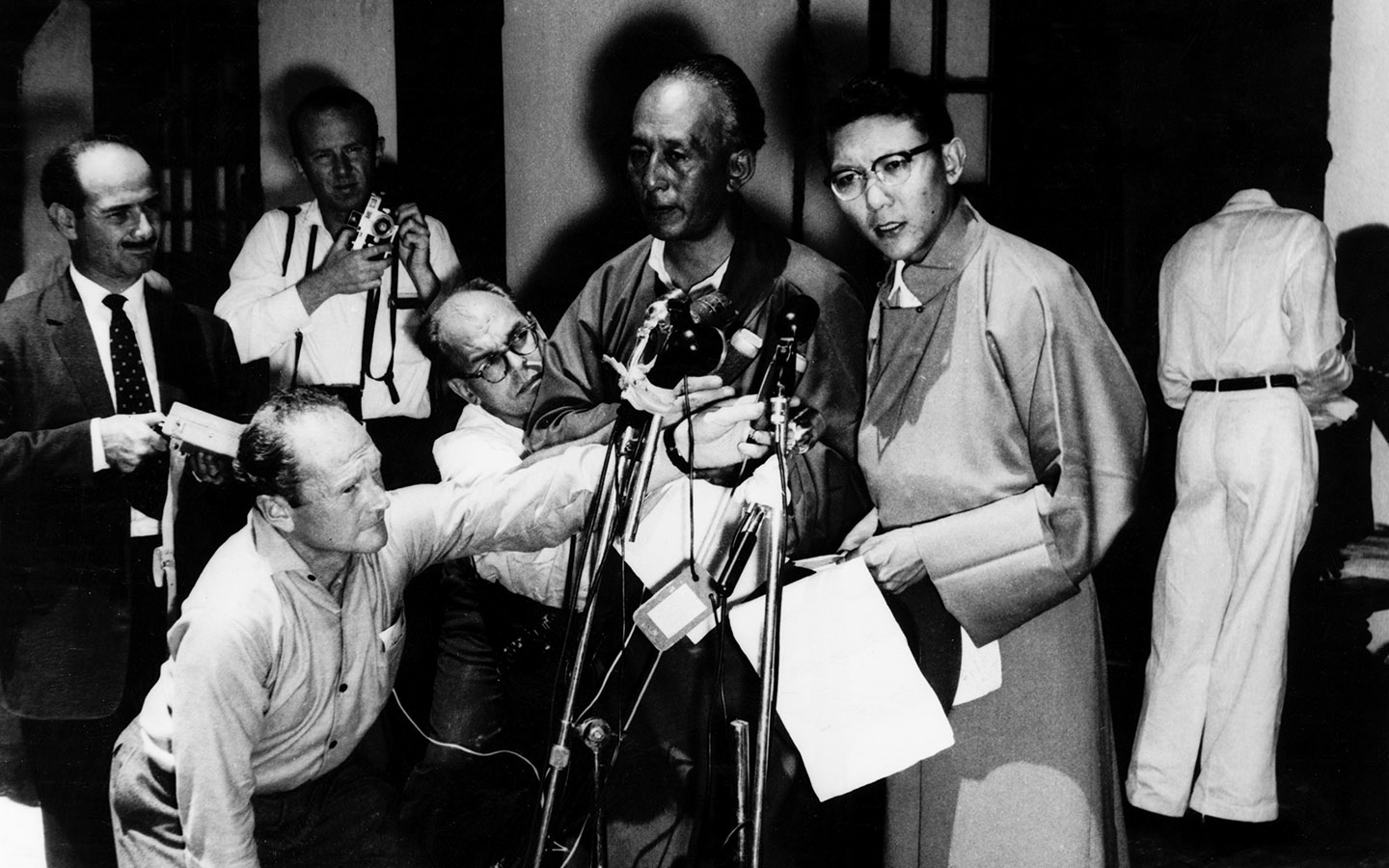 18 April, 1959
18 April, 1959Tibetan government officials speaking to the media for the first time during which Yuthok Jigme Dorje (in glasses) read His Holiness’s first press statement, denouncing the 17-Point Agreement forced upon Tibet by China. To the left of Yuthok is Surkhang Lhawang Topgyal. Heinrich Harrer, reporting for LIFE Magazine, seen in the forefront of the photo.
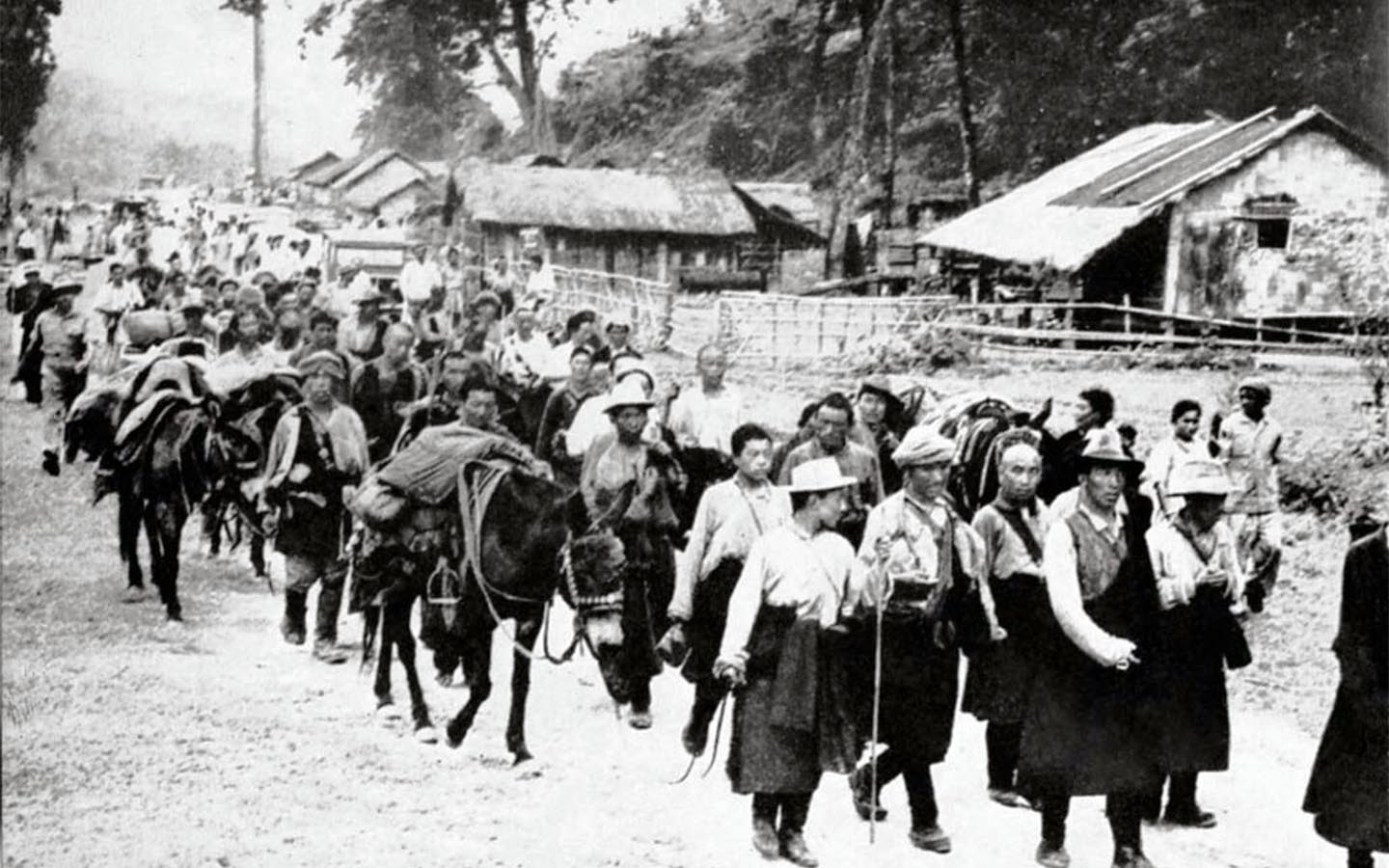 May - June, 1959
May - June, 1959One of the first group of Tibetans arriving at Missamari Transit Camp.
After the invasion of Tibet in 1949, a small but steady number of Tibetans started coming into India and the flow continued throughout the 1950s. However, after the escape of His Holiness the Dalai Lama, this influx increased dramatically and thousands started fleeing their homeland. His Holiness requested the Indian Government for assistance, which led them to set up two transit camps for Tibetan refugees - one at Missamari in Assam, and the other at Buxa Duar in West Bengal.
